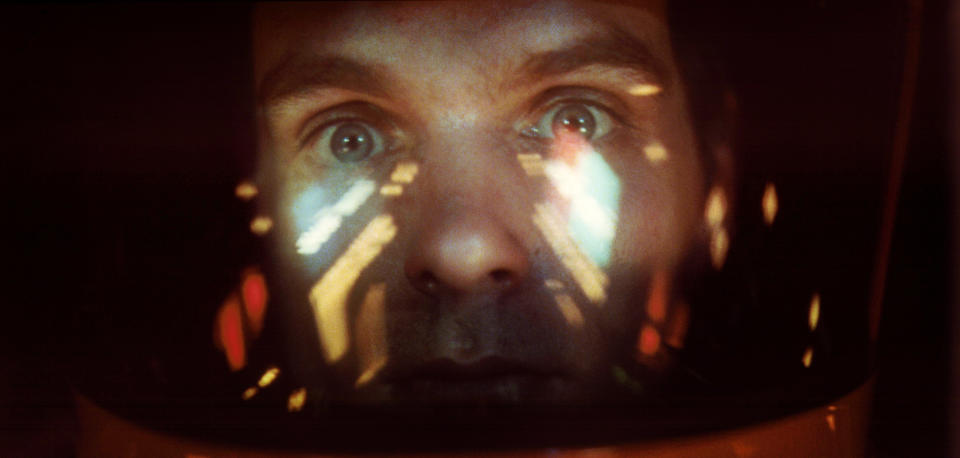Douglas Trumbull Dies: ‘2001’ and ‘Blade Runner’ Visual Effects Master Was 79

- Oops!Something went wrong.Please try again later.
- Oops!Something went wrong.Please try again later.
Douglas Trumbull, the pioneering VFX master behind the groundbreaking science-fiction classics “2001: A Space Odyssey” and “Close Encounters of the Third Kind,” has died. His daughter, Amy, shared the news on Facebook that Trumbull had cancer, a brain tumor, and a stroke. He was 79.
“He was an absolute genius and a wizard and his contributions to the film and special effects industry will live on for decades and beyond,” she wrote. Trumbull created the special photographic effects for Kubrick’s innovative “2001” (especially the trippy Star Gate sequence, which revolutionized time exposure, miniatures, and motion control techniques), Spielberg’s aliens-among-us classic “Close Encounters” (which advanced the lessons learned from “2001”), the first big-screen wonderment of “Star Trek: The Motion Picture,” and the seedy, futuristic LA of Ridley Scott’s “Blade Runner.” The latter three films earned him Best Visual Effects Oscar nominations. He also worked on the VFX for the sci-fi cult classic, “The Andromeda Strain,” and Terrence Malick’s “The Tree of Life.”
More from IndieWire
“Speaking, solely, personally as Doug’s lawyer and business advisor for more than 40 years, I can say that Doug was amazing and brilliant, an inventor, scientist and artist, a modern counterpart to Leonardo da Vinci,” Trumbull’s attorney Kenneth Kleinberg said in a statement shared with IndieWire. “And a lovely and graceful man with a beautiful spirit. From his early days working on ‘2001,’ he developed a love affair with the giant screen that he never lost and motivated him all of his life.”
And from Weta FX’s four-time Oscar-winner Joe Letteri: “Doug stands out as a iconic figure in visual effects, one of the early pioneers who blended a deep knowledge of cinematography and mechanics to develop techniques that we still use today. An early evangelist of high frame rate processes, Doug’s vision for where we can take cinema is just now coming to fruition. He will be missed.”
Trumbull directed two films, “Silent Running” and “Brainstorm,” on which he also oversaw the VFX. It was Trumbull’s great hope to get back to directing during the last 20 years of his life, when he was principally preoccupied with advancing virtual production and high frame rate tech for 3D exhibition. Indeed, Trumbull’s pioneering efforts began in the late ’70s and early ’80s with Showscan: an experiment to revolutionize large-format 65mm theatrical presentation by utilizing a higher frame rate of 60 fps. The result was a precursor to high definition with an incredibly hyper-real look. It was Trumbull’s intention to shoot “Brainstorm” in Showscan, alternating between reality and VR, but it proved too costly for his ambitious vision. Instead, he replaced the concept with 35mm and 70mm sequences.

Everett Collection / Everett Collection
However, Trumbull applied Showscan to simulation rides such as the popular “Back to the Future.” In 1993, he earned a Scientific and Engineering Academy Award (shared with Robert Auguste) for the CP-65 Showscan Camera System — the first modern 65mm camera developed in 25 years. Trumbull also won a Gordon E. Sawyer Award in 2012, a special Oscar honor presented to “an individual in the motion picture industry whose technological contributions have brought credit to the industry.” In addition, he earned the Visual Effects Society’s prestigious Georges Méliès Award in 2012.
“I’m completely committed to the advantages of electronic cinematography as it relates to visual effects,” Trumbull said back in 2003. “Because, philosophically, I’m committed to the development of a completely comprehensive virtual set system…that uses electronic cinematography and very accurate sensors of camera position, and sends that information through a processor, which gives you exact positional accuracy…for a real-time virtual set environment.”
Throughout the last couple of decades, Trumbull developed a digital version of Showscan, called MAGI, which shoots and projects 3D images at 120 frames-per-second, from his studio in the Berkshires. The filmmaker envisioned using MAGI and his own in-studio virtual production methodology to make first-person-style sci-fi movies on the order of “2001.”
While the exacting and discerning Trumbull appreciated the great advancements in CG throughout the last 20 years, he complained about a lack of organic quality that didn’t age well. That’s what set his great work apart from all the rest. “I’m all about what I call ‘organic effects’ — miniatures, liquids, fluid dynamics, really beautiful stuff, some of which I did for Terry Malick on ‘Tree of Life,'” he told IndieWire’s Eric Kohn via Zoom in 2021.
Trumbull was also dedicated to improving the theatrical experience, whose qualitative decline in digital projection upset him until the advent of 4K laser projection. “There’s a magic that happens in movie theaters when everyone knows it’s dark, everyone knows they can’t be seen,” he told Kohn. “My opinion about movie experiences in theaters is that it’s a really interesting, cathartic opportunity for emotional release. It’s OK to be sad, in love, to watch someone get chased or killed and feel all the tension and anxiety of it. In a darkened room, there’s something safe about that — completely separate from COVID and everything else — and there’s magic in that. I don’t want it to go away. I’m all about making movies for giant screens.”
Best of IndieWire
New Movies: Release Calendar for February 4, Plus Where to Watch the Latest Films
How I Shot That: The Cameras and Cinematography of Sundance Scripted Narrative Films
Sign up for Indiewire's Newsletter. For the latest news, follow us on Facebook, Twitter, and Instagram.

